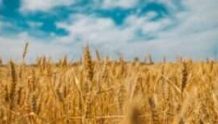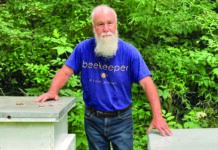Released: August 7, 2020
Kansas Forest Service: Tip dieback on trees may not be permanent
Trees will rebound from environmental stressors that cause tip dieback on trees, official says
MANHATTAN, Kan. – Branch tip dieback, a progressive death of twigs and branches, can be worrisome to see on oak trees in summer, as these long-lived shade trees are a valued part of the Kansas landscape. But officials at the Kansas Forest Service say tip dieback is not always detrimental to the long-term health of the tree.
“There can be several causes for tip dieback on oaks,” said Ryan Armbrust, forest health coordinator with the Kansas Forest Service. “Drought or soil compaction can cause trees to respond with dieback at the very top of the tree, but this damage is often temporary, and can be overcome by some simple steps we can take to improve the health of the tree.”
Armbrust said symptoms can be eased by avoiding further soil compaction, simply waiting for regrowth when more rain arrives, or by being proactive and deep watering trees when it’s very dry. Even large, established trees benefit from supplemental water, he said.
Insects may also cause dieback on a number of trees, including oaks. In years with high cicada brood numbers, large numbers of branch tips may experience flagging, browning and even breaking due to cicada egg-laying behavior. Like the cicadas themselves, this is a temporary problem that will not affect long-term health of the tree, according to Armbrust.
Another pest, kermes scale, can cause tip dieback on oaks, especially pin oak. Armbrust said this small insect is somewhat camouflaged and looks more like a small bump or wart on the twig than a typical insect. Kermes scales suck sap out of small terminal branches, leaving behind many dead, brown branch tips across the tree’s canopy.
“In many cases, branch tip dieback on oaks and other shade trees may appear much more serious than it is and may not have a lasting impact on the tree’s overall health,” Armbrust said. He suggests monitoring trees for stressors and making case-by-case decisions on whether or not treatment may be needed.
While many infestations are minor and will cause no lasting harm to trees, Armbrust said heavy infestations may require treatment.
Treatment for kermes scale depends on the size of the tree, the species of the tree, and the capabilities of the applicator. For kermes on bur oak, a spring application of an insecticidal spray (such as cyfluthrin or acephate), a fine horticultural oil, or an insecticidal soap is effective at controlling kermes crawlers.
For pin oak kermes scale, he said, the methods are similar, but the timing for targeting scale crawlers is September. For these methods, good coverage of the tree is essential, therefore large trees may be difficult for homeowners to effectively apply treatments, and a certified arborist should be consulted.
Systemic control is also possible for kermes scale, with a late-fall soil drench of imidacloprid. Armbrust said care should be taken to limit uptake of this insecticide by any nearby insect-pollinated plants, as off-target impact to beneficial insects and pollinators could occur.
“Identifying and reducing sources of stress to trees is beneficial and can help keep your trees healthy and growing in the landscape for as long as possible,” he said.
More information is available online in two publications from K-State Research and Extension, Kermes Oak Scale and Scale Insect Pests.
FOR PRINT PUBLICATIONS: Links used in this story
Kermes Oak Scale, https://hnr.k-state.edu/extension/info-center/common-pest-problems/common-pest-problem-new/Kermes%20Oak%20Scale.pdf
Scale Insect Pests, https://bookstore.ksre.ksu.edu/pubs/MF3457.pdf
About the Kansas Forest Service
The Kansas Forest Service is the nation’s fifth oldest state forestry agency. The agency serves rural landowners, communities, rural fire districts, forest and arboriculture industries, and citizens of the state through its Conservation Tree and Shrub Planting, Fire Management, Community Forestry, Rural Forestry, Marketing and Utilization, and Forest Health programs. The Kansas Forest Service state office is located in Manhattan, Kansas, just west of the campus of Kansas State University. The Kansas Forest Service is housed as an independent agency within K-State Research and Extension. The agency receives its direction from a mission statement that reads: “Care of natural resources and service to people through forestry.”
About K-State Research and Extension
K‑State Research and Extension is a short name for the Kansas State University Agricultural Experiment Station and Cooperative Extension Service, a program designed to generate and distribute useful knowledge for the well‑being of Kansans. Supported by county, state, federal and private funds, the program has county extension offices, experiment fields, area extension offices and regional research centers statewide. Its headquarters is on the K‑State campus in Manhattan. For more information, visit www.ksre.ksu.edu. K-State Research and Extension is an equal opportunity provider and employer.
For more information:
Ryan Armbrust
Kansas Forest Service
785-532-3276




